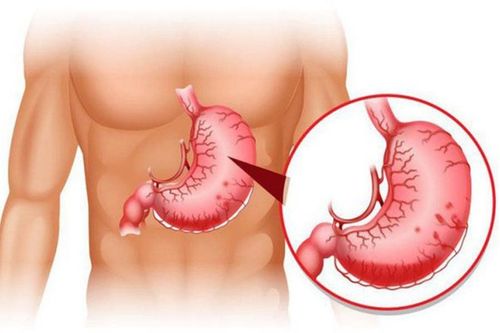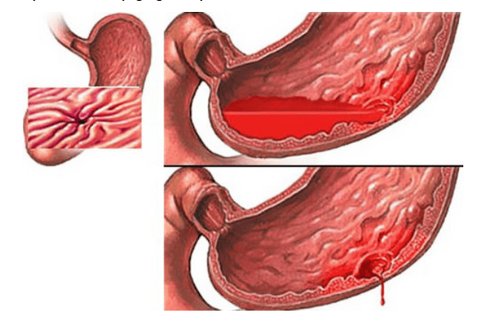This is an automatically translated article.
This article is professionally consulted by Master, Resident Doctor Tran Duc Tuan - Department of Diagnostic Imaging - Vinmec Central Park International General Hospital. The doctor has many years of experience in the field of imaging and interventional internal and external blood vessels.DSA technique - digital angiography erasing the background is a technique to capture images of blood vessels by X-ray. This technique can be applied to many different blood vessels in the body, including the splenic - portal vein. . So how does the digitized scan to erase the background of the splenic vein - portal take place?
1. What is a digital scan of the splenic vein - portal?
Percutaneous digital erasure of the splenic-portal venous system is a minimally invasive vascular exploration technique. This technique is usually done by passing through the liver parenchyma or through the spleen parenchyma to enter the splenic-portal venous system, then inject iodine contrast material and conduct angiography. From there, it helps to assess the state of blood circulation and pathologies of the splenic-portal venous system.2. Indications for splenic-portal vein DSA scan
2.1 Designation
In some clinical situations, angiography of the portal vein system is usually indicated when: splenic-portal venous stenosis due to benign or malignant causes, patients with portal hypertension, dilated veins. Esophageal varices , gastric varices , portal vein abnormalities...Sometimes, a splenic-portal DSA is performed before other procedures such as treatment for stenosis of the anastomosis portal vein after liver transplantation, treatment of esophageal varices.
2.2 Contraindications
Patients with a history of allergy to iodinated contrast agents Patients with grade IV severe renal failure Internal jugular vein thrombosis Superior vena cava thrombosis Severe, uncontrolled coagulopathy (only prothrombin <60%, INR > 1.5 and platelet count < 50 g/l) Patients with severe cirrhosis and ascites Pregnant women.
3. Preparation before taking digital scan to erase the background of the splenic-portal vein
Person performing the procedure: Specialist doctor; Auxiliary physician; Electro-optical technician; Nursing; Doctor, anesthesiologist (if patient cannot cooperate). Means and machinery to be prepared: DSA scanner; Electric pump; Curved transducer ultrasound machine; Sterile plastic bag to wrap the ultrasound transducer; Film, film printer, image storage system; Protective lead suit, apron, X-ray shield. Prepare medicines: Local anesthetic; Pre-anesthesia and general anesthetic (if the patient has an indication for general anesthesia); Anticoagulants ; Drugs that neutralize anticoagulants; Water-soluble iodinated contrast agent; Solution used to disinfect skin and mucous membranes. Prepare the patient before the procedure: The patient is thoroughly explained about the procedure and the process of digitalizing the splenic vein background - portal to cooperate with doctors and technicians. Patients or relatives must write a commitment to agree to perform the procedure. Patients need to fast, fast for 6 hours before or can drink no more than 50ml of water; After entering the intervention room, the patient will be placed in the supine position, and the technicians will install a machine to monitor vital signs such as breathing rate, pulse, blood pressure. , electrocardiogram, arterial blood gas. In case the patient is uncooperative or aggressive, a sedative will be prescribed; Disinfect the skin surface with an antiseptic solution and cover with a sterile towel with holes.4. Digital imaging process to erase the background of the splenic vein - portal
Step 1: Place the tube into the vessel. The patient is given local anesthesia, then the doctor will make an incision. The angiography needle was used to puncture the liver parenchyma into the branches of the intrahepatic portal vein. In some cases, a puncture through the splenic parenchyma may be considered to enter the splenic vein. Next, insert the tube into the 5 - 6F lumen into the intrahepatic portal vein branch.Step 2: Conduct angiography Insert the catheter (Cobra) and guidewire (guidewire) into the main body of the portal vein or the mesenteric or splenic vein. Then replace the Cobra catheter with a pigtail catheter (Pigtail) or a multi-sided catheter with a long lead (260mm), withdraw the lead from the Pigtail catheter.
Conduct digital angiography to erase the background of the splenic - portal vein system through a pigtail catheter (Pigtail).
Step 3: End of DSA procedure Withdraw the entire catheter, wire and tube into the vessel. Note, right before withdrawing the intravascular tube from the liver capsule, it is necessary to completely occlude the portal vein branch with metal coil embolization material (Coils) to prevent the risk of abdominal bleeding at the puncture site. into the liver parenchyma.
The digital scan to erase the background of the splenic-portal vein is successful when it reveals all the components of the splenic-portal artery system, including: the splenic vein, the superior mesenteric vein, the main body of the splenic vein. portal vein, portal vein in the liver.

5. Complications when performing procedures and how to handle them
Intra-abdominal bleeding: the cause of this complication is the tearing of the liver parenchyma and the liver capsule at the opening of the portal vein or bleeding due to injury to the arteries in the abdominal wall leading to blood flow into the abdomen. . If bleeding is from an artery in the chest wall or a hepatic artery, angiography and embolization may be performed. If bleeding is from the branches of the portal vein, it can be monitored and treated medically with drugs. Biliary tract bleeding: may resolve spontaneously due to the small amount of bleeding. Vinmec International General Hospital is a high-quality medical facility in Vietnam with a team of highly qualified medical professionals, well-trained, domestic and foreign, and experienced.A system of modern and advanced medical equipment, possessing many of the best machines in the world, helping to detect many difficult and dangerous diseases in a short time, supporting the diagnosis and treatment of doctors the most effective. The hospital space is designed according to 5-star hotel standards, giving patients comfort, friendliness and peace of mind.
Please dial HOTLINE for more information or register for an appointment HERE. Download MyVinmec app to make appointments faster and to manage your bookings easily.














